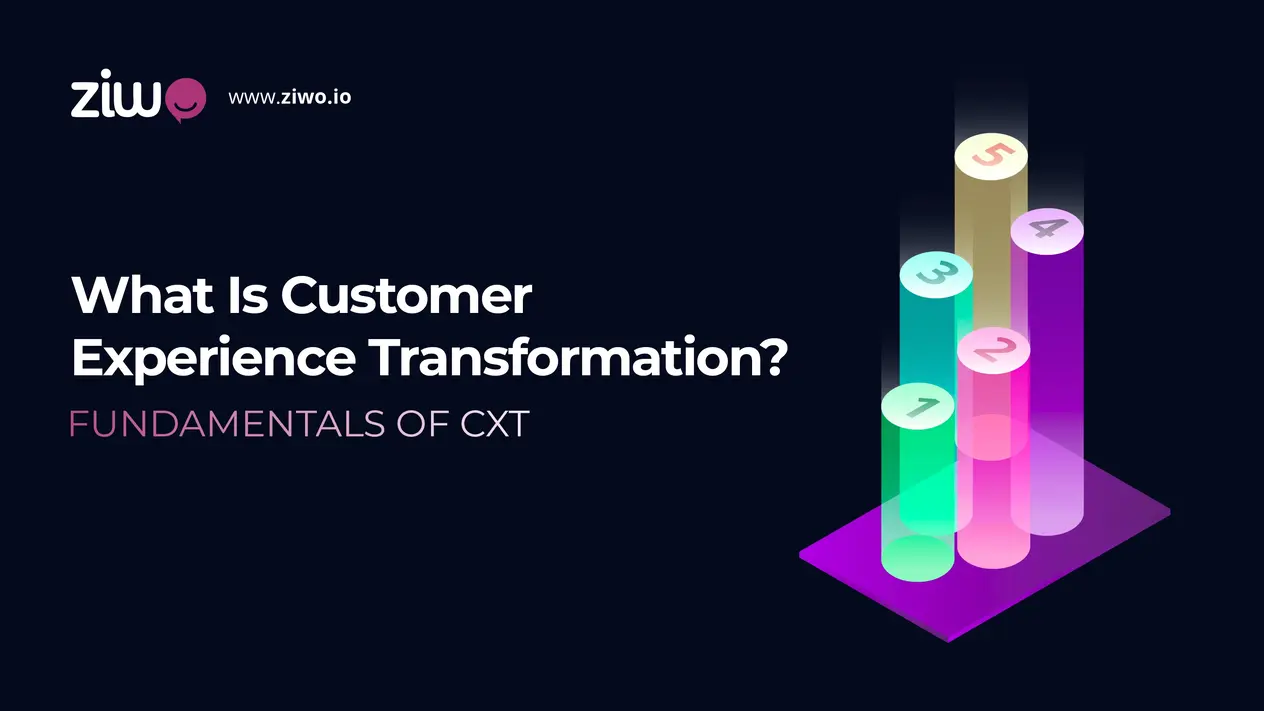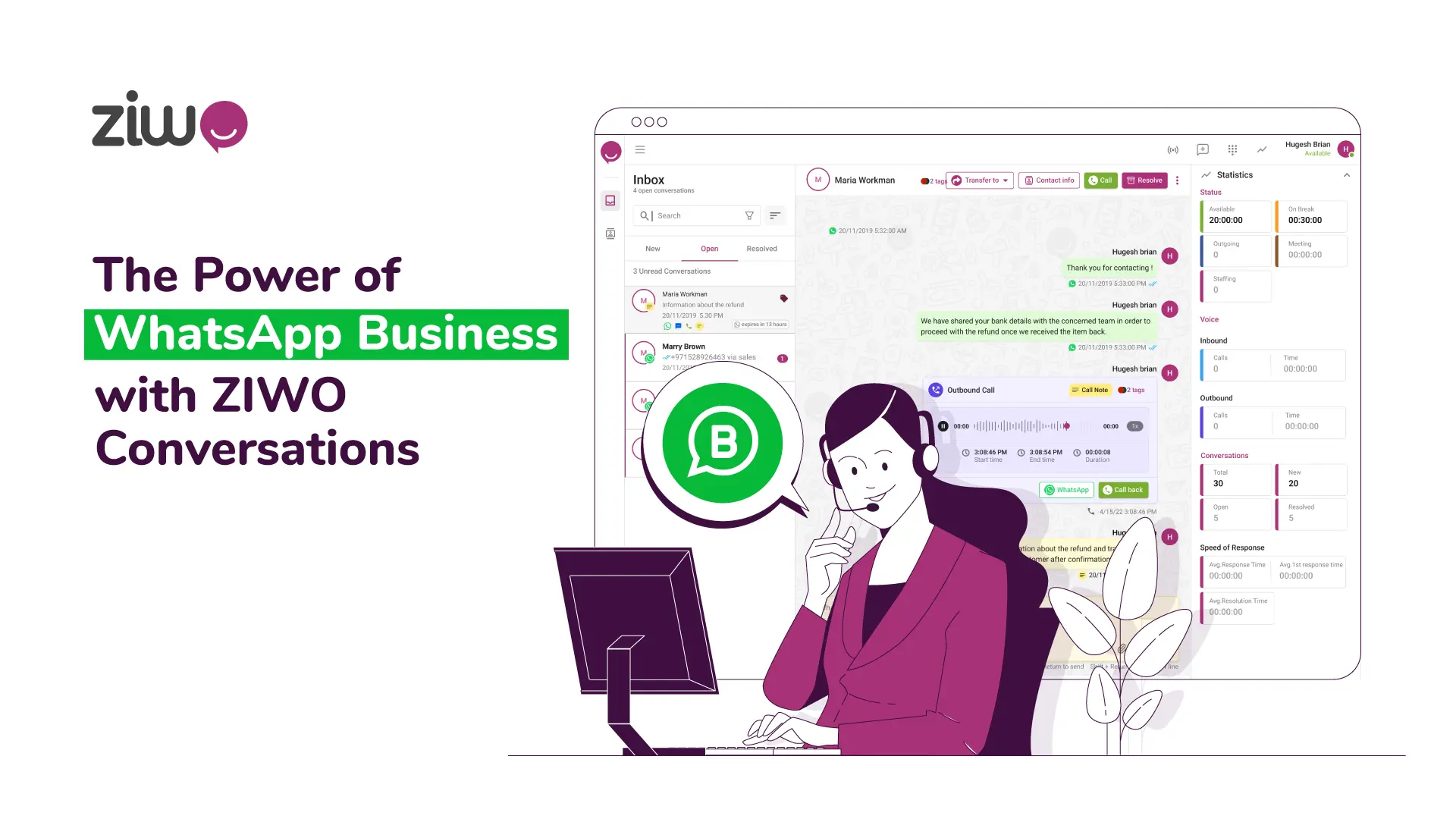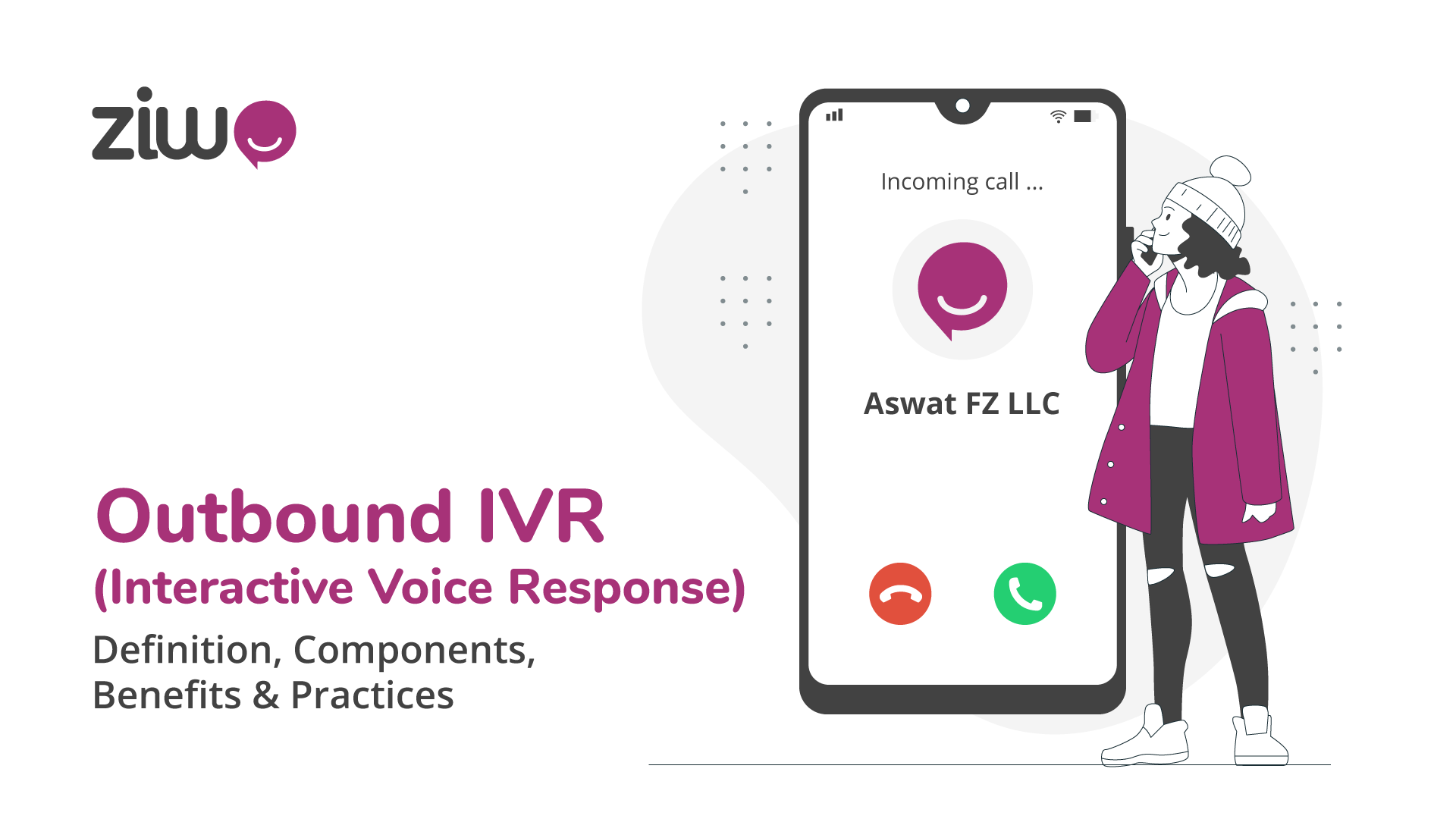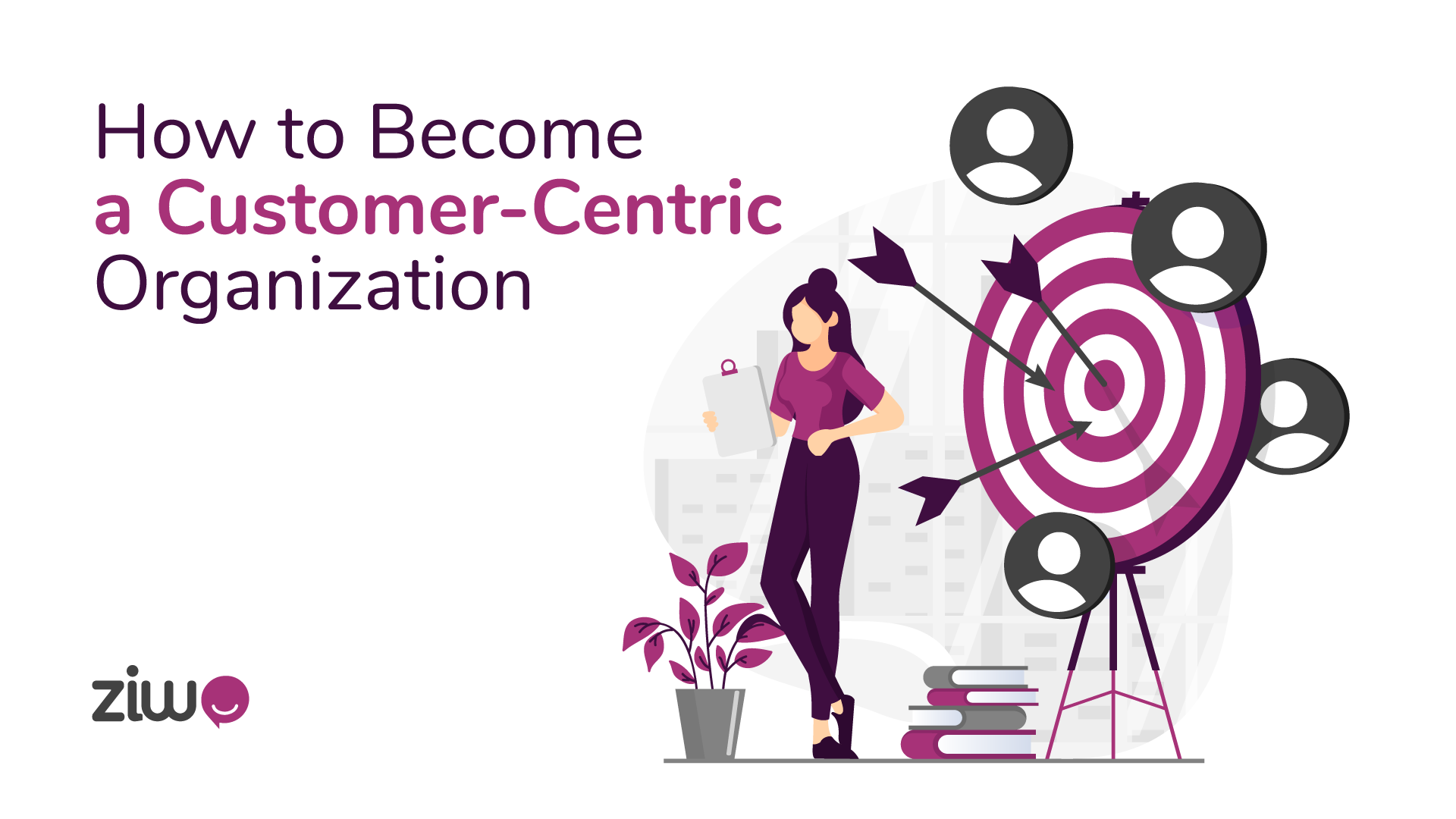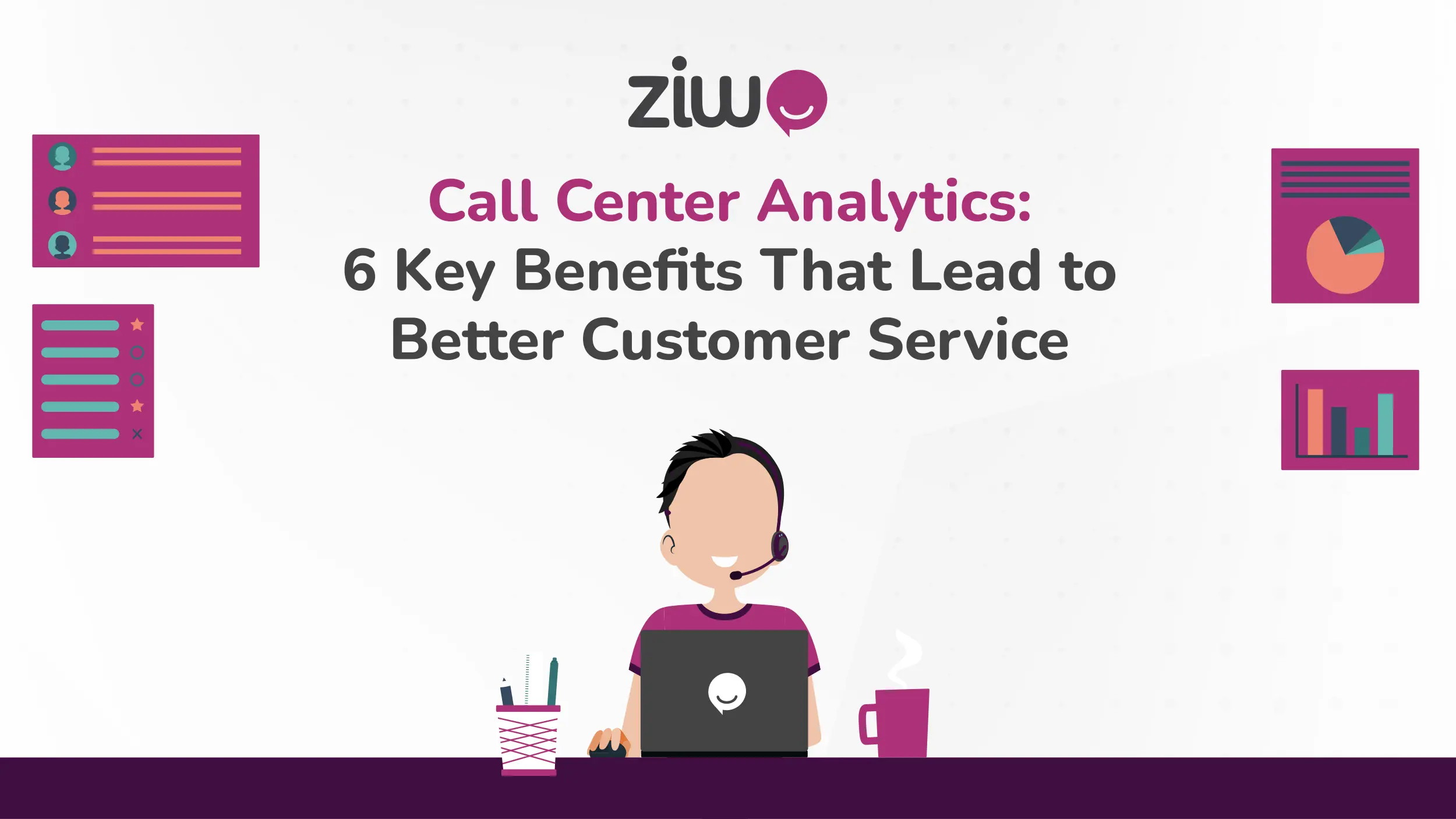
Logiciel d'analyse des centres d'appels : 6 avantages clés pour un meilleur service à la clientèle
Vous avez besoin de mieux comprendre les efforts des agents de votre centre d'appels et l'efficacité des opérations ?
Votre centre d'appels comporte de nombreux éléments qui doivent être surveillés en temps réel pour garantir la qualité du service à la clientèle.
Le moindre changement dans votre centre d'appels dans le cloud peut avoir une incidence sur la satisfaction et la fidélisation des clients, c'est pourquoi vous devez examiner tout ce qui se passe sur le terrain.
C'est pourquoi le logiciel d'analyse des centres d'appels devient un facteur majeur dans la prise de décisions basées sur les données pour développer le personnel, mettre à niveau les outils ou même augmenter les effectifs !
Laissez-nous vous présenter les fonctionnalités les plus efficaces qui font du logiciel d'analyse des centres d'appels la seule chose dont votre entreprise a besoin !
1- Le pouvoir des données : Comprendre les interactions avec les clients
Les clients s'engagent avec votre entreprise par le biais de différents canaux et de différents médias, y compris la voix, les messages textuels, les plateformes de médias sociaux et les locaux physiques, s'ils existent. En d'autres termes, le logiciel d'analyse des centres d'appels est devenu un concept qui rassemble toutes les données relatives aux points de contact entre l'entreprise et les clients.
Le logiciel d'analyse des centres d'appels omnicanaux définit les canaux les plus utilisés par les clients dans chaque cas. Lorsque le client Adam Smith a une question, va-t-il contacter le centre d'appel par téléphone ou envoyer un message ? Lorsqu'il est confronté à un problème technique, va-t-il se rendre à la section d'assistance technique du magasin ou envoyer un courrier électronique expliquant les détails du problème ?
Ces informations sur le client vous permettent de prendre des décisions éclairées sur ses interactions, ce qui vous donne le contrôle de l'expérience client. Toutes ces activités vous aident à mieux connaître votre client et à déterminer la plateforme appropriée à utiliser dans chaque cas.
Au fur et à mesure que vous développez une relation avec le client, le buyer persona que votre équipe marketing a mis au point devient un fait que vous déterminez et dont vous êtes sûr.
Vous pouvez rapidement apprendre des données qui vous aident à penser stratégiquement au centre d'appel et à sa gestion. Par exemple, vous pouvez identifier
- L'heure de pointe est celle où le centre reçoit le plus grand nombre d'appels.
- La cause la plus fréquente qui pousse les clients à contacter le centre d'appel.
- Le temps d'attente moyen des clients dans la file d'attente.
- Les balises les plus utilisées dans les appels par les clients.
- Le nombre moyen d'appels effectués par le client jusqu'à ce que l'agent du centre d'appel résolve le problème.
2- L'analyse en temps réel pour une amélioration immédiate du service
L'analyse des appels, les tableaux de bord, les alertes, les modèles de discours et le suivi acoustique accompagnent le logiciel d'analyse du centre d'appels pour examiner les interactions avec les clients. Ainsi, le logiciel peut facilement détecter le langage profane, les tentatives d'escalade, les violations de la conformité et le sentiment du client. À votre avis, comment cela reflète-t-il l'efficacité opérationnelle ?
Identifier les problèmes et les opportunités grâce à des données en temps réel
Un simple appel peut devenir dangereux, le client menaçant l'agent de mettre fin au contrat et de porter plainte contre l'entreprise. Pour éviter cette escalade, les logiciels d'analyse des centres d'appels informent les chefs d'équipe de ce qui se passe dans les appels en cours.
Ainsi, le chef peut indirectement s'immiscer dans l'appel et soutenir l'agent grâce à des fonctionnalités telles que le chuchotement d'appel afin qu'il puisse s'occuper du client. Le fait de sauver la mise avant qu'un appel ne se transforme en un problème grave et scandaleux facilite grandement la gestion des plaintes des clients.
En outre, l'analyse permet de découvrir toute opportunité de vente lors de la surveillance de l'appel en temps réel. Les phrases analysées informeront l'agent et le chef d'équipe du produit qui peut remédier aux problèmes du client. Là encore, le chef d'équipe peut gérer l'appel lui-même ou guider l'agent vers les conseils qui amèneront le client à se convertir.
En outre, avec l'aide de l'IA générative et du NLP, qui comprennent la parole et le texte, les agents reçoivent des suggestions de réponses pour les aider au cours de l'appel.
Adapter les interactions avec les clients grâce à des informations instantanées
La collecte de données à partir de différentes sources, telles que les journaux d'appels, les courriels, les transcriptions de chat et autres, contribue à développer une expérience client personnalisée.
Le logiciel d'analyse du centre d'appels comprend le langage et les expressions des clients avant qu'ils ne quittent l'entreprise. Ainsi, le logiciel aide l'entreprise à formuler une expérience personnalisée basée sur les préférences, les activités, les comportements et les intentions enregistrés.
Les informations que votre entreprise peut tirer de l'analyse des commentaires et des réponses aux enquêtes aideront votre équipe à s'améliorer dans différents domaines. Vos actions correctives se traduiront par une plus grande satisfaction et un meilleur taux de fidélisation de la clientèle.
Les actions et les intérêts des clients vous aident à constituer une base de données qui pourrait servir de référence pour les questions fréquemment posées (FAQ) qui concernent n'importe quel autre client. Elles sont donc automatiquement envoyées par les canaux disponibles chaque fois qu'un client passe par une situation pertinente.
3- Analyse des données historiques pour le développement de stratégies à long terme
Disposer de données actuelles sur les activités en temps réel est un avantage ; cependant, le logiciel d'analyse des centres d'appels permet à votre entreprise d'examiner les données historiques et de les comparer aux données les plus récentes. Contrôler ce qui se passe dans la minute en cours pourrait être inutile si vous ne gardez pas trace des minutes, des heures, voire des mois précédents.
L'analyse des données historiques sera toujours une excellente alarme qui vous informera des menaces ou des opportunités possibles. L'affichage des données sous une forme granulaire vous permet de remarquer chaque détail susceptible d'influer positivement sur votre décision concernant des éléments commerciaux cruciaux.
Avec l'aide de ce type d'analyse, vous serez en mesure de prédire les résultats futurs de toute amélioration sur la base des résultats d'améliorations similaires antérieures. Ainsi, votre centre d'appels peut prévoir les volumes d'appels et les besoins en personnel pour atteindre l'efficacité opérationnelle. Il en résultera de meilleurs résultats pour le centre d'appel, tels que
- Une meilleure allocation des ressources.
- Moins de temps d'attente.
- Augmentation de la productivité des agents.
4- Améliorer la performance des agents grâce à l'analyse
Que votre centre d'appels soit inbound, outbound ou les deux, vous devez vérifier la performance de vos agents. Le reporting transforme les données brutes fournies par le logiciel de centre d'appels et les accumule en un résumé accessible et complet. Ensuite, l'analyse vous permet de déterminer les informations exploitables et les améliorations observables. Plus besoin de traiter des montagnes de données pour explorer les écarts de performance ; les capacités organisationnelles et analytiques du logiciel de centre d'appels feront le travail à votre place.
Formation et développement basés sur des informations fondées sur des données
En vous basant sur les données, vous et les chefs d'équipe pouvez trouver les points faibles extraits des paroles et des interactions des agents et déterminer la qualité de chaque appel. En fonction des analyses, vous pouvez organiser des sessions de formation et des ateliers qui améliorent les compétences non techniques typiques et les connaissances techniques requises que chaque agent du centre d'appel doit posséder.
Les analyses couvriront le défi auquel le département L&D est confronté avec chaque programme de formation ; selon Harvard Business Review , seuls 12% des employés appliquent les nouvelles compétences acquises lors des programmes de formation à leur travail, ce qui signifie que la formation a utilisé des données insuffisantes qui ont conduit à une mauvaise sélection du sujet de la formation.
Motiver le personnel à l'aide d'indicateurs de performance clairs
De nombreux indicateurs permettent aux agents des centres d'appels d'obtenir des performances supérieures à celles attendues. Le logiciel d'analyse des centres d'appels peut les fournir de manière transparente, par exemple :
- Appels en attente actifs: Cette mesure vous permet de comparer le nombre d'appels gérés activement par les agents au nombre d'appels laissés en attente. Vous pouvez mesurer le nombre d'appels par heure afin de déterminer le moment où votre centre d'appels reçoit le plus grand nombre d'appels.
- Vitesse moyenne de réponse: Cet indicateur mesure le temps nécessaire à l'agent pour répondre à un appel entrant. Une norme très répandue dans les centres d'appel stipule que les agents doivent répondre à 80 % des appels entrants en 20 secondes ou moins.
- Temps de parole moyen: le temps écoulé entre le moment où l'agent prend la ligne et celui où il raccroche. Cette mesure indique parfaitement le temps que les agents offrent aux clients.
- Temps de traitement: après le temps d'attente, le temps de traitement est consommé à partir du moment où le client contacte le centre d'appel jusqu'à ce que l'équipe spécialisée résolve le problème. Le temps de synthèse reste après la fin de l'appel, pendant lequel l'agent exécute et délègue des tâches pour résoudre le problème de son client.
- Appels manqués: Les logiciels de centre d'appel peuvent suivre les appels manqués afin que les agents essaient de rappeler. Toutefois, si un client appelle et qu'aucun agent ne répond, cela a de l'importance, car cela diminue la satisfaction du client. En accordant plus d'attention à cette mesure, votre entreprise aura toujours une longueur d'avance sur ses concurrents.
- Taux de transfert: Le pourcentage d'appels entrants que l'agent assigné transmet à un autre membre de l'équipe ou à un autre service vous aide à déterminer l'efficacité de l'IVR et à savoir si les messages-guides correspondent réellement à ce que souhaite l'appelant.
- Taux d'utilisation des agents: Ne vous êtes-vous pas déjà demandé combien de temps votre agent passe à répondre aux appels entrants par rapport à son temps de travail total ? Cette mesure répond précisément à cette question, en excluant les pauses déjeuner ou les absences.
- Respect des horaires: Un autre indicateur essentiel que les petits centres d'appels doivent gérer est celui des retards ou des congés non planifiés qui peuvent augmenter les taux d'appels en attente et d'abondance.
- Appels traités par heure: il s'agit d' une mesure qui indique le nombre d'appels auxquels chaque agent répond par heure. Il s'agit d'une mesure variable qui change en fonction du moment : est-ce le jour ou la nuit ? S'agit-il d'une saison particulière pour votre entreprise ou d'un jour normal ? Et ainsi de suite.
5- Analyse du retour d'information des clients pour une amélioration continue
Recueillir les commentaires et savoir ce que les clients pensent de votre expérience n'est qu'un début. Le logiciel d'analyse des centres d'appels vous aide à transformer ces commentaires positifs et ces critiques en actions positives.
Une fois que le logiciel a recueilli les commentaires, il peut vous aider à déterminer les améliorations qui peuvent faire partie des plans à court et à long terme, ce qui améliore l'établissement des priorités.
Le logiciel applique un processus de boucle de retour d'information, dans lequel le système recueille continuellement des commentaires et recommande des améliorations de l'expérience client.
Les enquêtes après appel sont considérées comme la principale méthode de collecte du retour d'information. Il s'agit de formuler des questions qui permettent d'obtenir des informations essentielles sur l'expérience client.
6- Intégrer l'analyse à d'autres solutions logicielles
Une intégration à 360° à travers les canaux avec des tableaux de bord en temps réel qui suivent chaque élément commercial intégré. L'analyse garantit une amélioration continue de l'expérience client afin de répondre aux degrés de réactivité, de transparence et de précision qu'il demande.
L'intégration du logiciel permet à votre entreprise de suivre le parcours du client et les interactions entre les points de contact sur tous les canaux. Elle permet également d'explorer les goulets d'étranglement et les difficultés auxquelles le client peut être confronté.
Avec le logiciel de centre d'appels, les rapports deviennent intelligents ! Toutes les conversations et conditions par lesquelles le client passe et qui sont conservées dans un CRM apparaîtront automatiquement à chaque nouvelle activité, affichant toutes les statistiques du client en bref.
Surmonter les difficultés liées à la mise en œuvre d'un logiciel d'analyse
Il y a trois principaux défis à relever en matière d'analyse des centres d'appels, et leurs solutions peuvent prendre du temps, demander des efforts ou même nécessiter des budgets distincts. Vous pouvez donc toujours y faire face, mais nous devons vous apporter des éclaircissements :
1- Grand volume de données
L'analytique traite des données multi-sources qui sont cruciales pour les agents des centres d'appels, les administrateurs et les directeurs d'entreprise. Au fur et à mesure que le volume de données agrégées augmente, il peut devenir un défi et une source d'inquiétude pour les gestionnaires. Ils utiliseront des données provenant d'appels, de chats, d'emails, d'interactions avec les médias sociaux, etc.
2- Manque de formation des membres de l'équipe
Tous les agents des centres d'appels n'ont pas les compétences nécessaires pour interpréter les analyses que le logiciel fournit sur les clients. C'est pourquoi des programmes de formation sont nécessaires pour s'assurer que les employés ont pratiquement les mêmes compétences.
3- Des workflows manuels médiocres
Pour expérimenter l'efficacité des résultats analytiques, votre système doit adopter des workflows automatisés qui fluidifient les opérations sans nécessiter de processus manuels sujets aux erreurs et chronophages.
Tendances futures en matière d'analyse des centres d'appels et de service à la clientèle
Les développeurs de logiciels intègrent les technologies émergentes aux logiciels d'analyse des centres d'appels omnicanaux afin d'offrir une meilleure expérience client. La réalité augmentée et la réalité virtuelle sont les principales intégrations qui devraient bientôt attirer l'attention des experts des centres d'appels.
Ces technologies amélioreront l'assistance à la clientèle, car les ingénieurs d'exploitation pourront voir virtuellement l'environnement du client et l'aider à résoudre les problèmes. Elles permettront également aux agents d'apprendre plus rapidement à partir de cas réels au cours de leurs programmes de formation.
Conclusion : L'analyse comme fondement de l'excellence du service à la clientèle
Les entreprises garantissent une vision à 360° du client et fournissent un service continu et de qualité qui répond aux attentes avec l'aide d'un logiciel d'analyse de centre d'appels. Ce logiciel agrège les données de tous les points de contact : téléphone, e-mail, médias sociaux ou chat en direct, afin d'offrir une expérience client cohérente et efficace.
Références
1 - L'apprentissage et le développement dans les entreprises :
¹ Harvard Business Review (2019). Where Companies Go Wrong with Learning and Development (Où les entreprises se trompent en matière d'apprentissage et de développement). Disponible à l'adresse : https://hbr.org/2019/10/where-companies-go-wrong-with-learning-and-development

